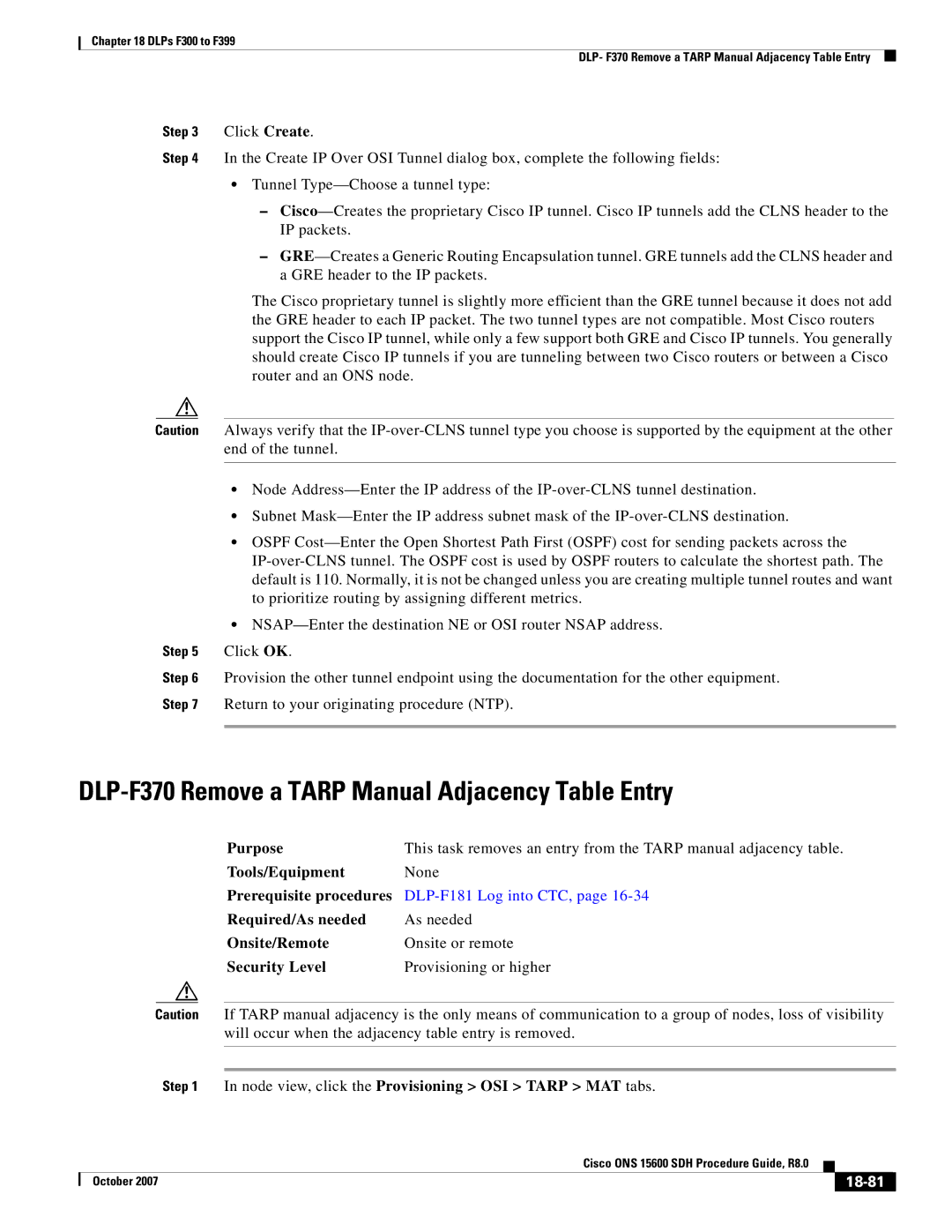
Chapter 18 DLPs F300 to F399
DLP- F370 Remove a TARP Manual Adjacency Table Entry
Step 3 Click Create.
Step 4 In the Create IP Over OSI Tunnel dialog box, complete the following fields:
•Tunnel
–
–
The Cisco proprietary tunnel is slightly more efficient than the GRE tunnel because it does not add the GRE header to each IP packet. The two tunnel types are not compatible. Most Cisco routers support the Cisco IP tunnel, while only a few support both GRE and Cisco IP tunnels. You generally should create Cisco IP tunnels if you are tunneling between two Cisco routers or between a Cisco router and an ONS node.
Caution Always verify that the
•Node
•Subnet
•OSPF
•
Step 5 Click OK.
Step 6 Provision the other tunnel endpoint using the documentation for the other equipment. Step 7 Return to your originating procedure (NTP).
DLP-F370 Remove a TARP Manual Adjacency Table Entry
Purpose | This task removes an entry from the TARP manual adjacency table. |
Tools/Equipment | None |
Prerequisite procedures |
|
Required/As needed | As needed |
Onsite/Remote | Onsite or remote |
Security Level | Provisioning or higher |
Caution If TARP manual adjacency is the only means of communication to a group of nodes, loss of visibility will occur when the adjacency table entry is removed.
|
| Step 1 In node view, click the Provisioning > OSI > TARP > MAT tabs. | |||
|
| Cisco ONS 15600 SDH Procedure Guide, R8.0 |
|
| |
|
|
| |||
|
|
|
|
|
|
| October 2007 |
|
|
|
|
|
|
|
| ||
